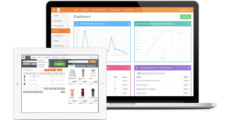
Credit: StartupStockPhotos
HR tech solutions have proven to be resilient as they continued to grow despite the onset of the COVID-19 pandemic and are flourishing amid today’s high inflation. In a new report by Technavio, the HR software market size is projected to rise by $11.17 billion from 2021 to 2026 at an annual growth rate of 10.68%. This highlights the importance of these platforms to the current landscape. After all, their use presents opportunities through economic headwinds and ensures that organizations always have a fresh pool of talent.
One of the key drivers of the HR software market growth is the sizable investments of enterprises in HR software and related tech like human capital management (HCM) software. Currently, organizations devote nearly 10% of their HR budgets to adopting, maintaining, and upgrading these systems. The high prioritization of HR and HCM software in the corporate sphere has caught the attention of venture capitalists, who have begun investing in the said platforms.
With more investments and budgets allocated to HR platforms, more organizations adopted or upgraded to HR technology, which resulted in the growth of the global software market. The North American market plays a pivotal role here, with the United States as the key player, as it accounts for 33% of the projected total growth. This means that the US demand for HR solutions has a considerable pull on the entire market. And the US economy appears to hold the cards as to why many organizations and investors took interest in HR systems, to begin with.
Many Jobs, Low Unemployment
The US economy is plagued with an inflation rate of 8.2% as of September 2022 and the Federal Reserve’s aggressive interest rate hike has made living conditions worsen. However, the economy has a bright spot that, according to some analysts, has kept the country from entering a recession—a strong job market.
Through 2022, including today’s high inflation period, the US job market never wavered. Companies nationwide perpetually furnish numerous openings that guarantee jobs for most people, as evidenced by the country’s low unemployment rate of 3.5%, a figure that has barely moved this year. Even though the number of openings declined in September, dropping from 315,000 to 263,000, it continues to provide ample opportunities not just to America’s labor force but also for workers from other countries, given that a lot of companies have opted to hire beyond the nation’s borders.
The large number of US openings and the country’s high labor force participation (62.3%) stimulated today’s high demand for HR software. As companies deal with a vast number of applicants from the country and beyond, they rely on these platforms to streamline the processes of recruitment, applicant screening and assessment, hiring, and payroll. In addition, HR systems often have HCM features or integrate with HCM platforms to speed up and simplify the workflows surrounding activities like recruitment, onboarding, talent management, and training.
Addressing HR Challenges
According to new HR software statistics, 86% of tech companies cite recruitment as a major challenge for HR teams. To add to this, a PricewaterhouseCoopers survey identified change management (48%), leadership development (35%), and measuring HR performance (27%) as the biggest hurdles for HR firms. Moreover, US companies are constantly bombarded with applications daily, given the high concentration of labor force participants.
An HR or HCM system addresses these by providing centralized spaces for multiple parties to thoroughly review applicants and applications prior to recruitment. Top-tier platforms also have modules for employee training and development, which can mold regular employees into leaders and prepare the workforce early on before an organization shifts its business model or focus.
What’s more, these systems store, process, and organize bulks of applications, so that HR personnel can easily consolidate qualified aspirants and provide detailed reports that reflect and break down an HR team’s performance. Some platforms even automate workflows, with the help of AI, to hasten entire operations and provide mobile solutions that enable HR professionals to work and be updated while on the go.
For these reasons, a growing number of organizations leverage these platforms, especially with today’s business landscape and America’s robust labor market. The pandemic has also spurred the HR trend of going digital as part of the digital transformations that swept enterprises worldwide. Even though the threat of COVID-19 has diminished, this trend still persists, influencing buy-ins whenever the need for comprehensive HR solutions arises.
HR Software Market Leaders
While HR and HCM software have been well-received by businesses worldwide, some platforms gain more buy-ins than others. The two software types tend to share functionalities and modules, as developers perpetually expand their toolsets and sometimes lump them together in HR suites. As such, these systems partially share the same industry leaders, as evidenced by recent reports from Apps Run the World.
For core HR software, the platform with the biggest market share is Workday, accounting for 12.8%, followed by SAP, ADP, UKG, and Oracle. Interestingly, Workday also owns the largest HCM software market share at 8.9%, closely trailed by Microsoft, UKG, SAP, and Oracle.
Although organizations can count on market leaders to deliver exceptional features and modules, they shouldn’t dismiss what other players bring to the table. After all, software solutions work optimally with specific business models and operational styles.
As the Apps Run the World reports show, several software providers outside of the top five registered a bigger year-on-year revenue growth than Workday, suggesting that they are experiencing an increasing number of buy-ins and account upgrades.
Moreover, the relatively small shares of Workday as the market leader for both software types convey that buy-ins are well distributed across the spectrum of vendors. This implies that prospective buyers have a host of worthwhile options on the market. It’s just a matter of finding the solution that fits an organization best.






















Leave a comment!